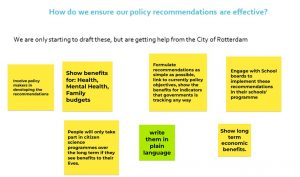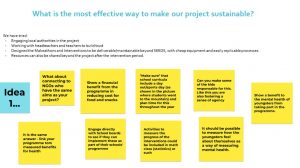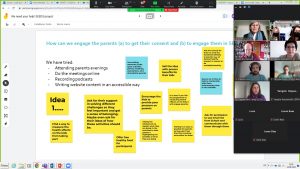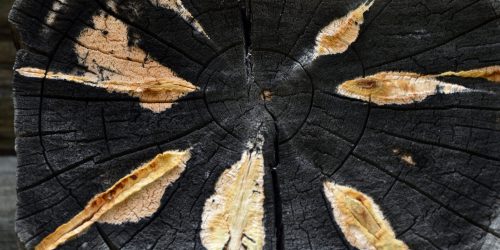Thinking about SEEDS
Published at 05.02.2022
For the SEEDS project it is time to draw some lessons and understand what to bequeath, make its innovative approach sustainable, highlight successes and understand how to overcome difficulties. And of course the results must be made public: in fact, there is no research without communication.
The researchers and organizations of the SEEDS consortium are part of an active community that explores new methods, exchanges experiences and knowledge and grows together to create a more just and cohesive society based on mutual trust between science and citizens. This is basically the purpose of all citizen science.
For this reason, SEEDS was the focus of one of the periodic meetings of representatives of all European projects currently active in citizen science. To break the ice, Lucía Tarro and Judit Queral researchers of Fundació Institut d’Investigació Sanitària Pere Virgili (IISPV, https://www.iispv.cat/) started with a small survey on our health-related lifestyles: SEEDS intends to promote healthy habits among adolescents, but we adults, who should be a guide and an example, are we really so aware and consistent? Yes and no. It was a good exercise to reflect on ourselves and better understand the needs and difficulties of others.
During the main part of the meeting, researchers explained how through a co-creation process, the Makeathons (link: https://seedsmakeathons.com/what-is-seeds/parts-of-the-project/makeathons/) carried out with adolescents and stakeholders, an intervention could be designed by and for adolescents. Some active pauses were organized for the participants to stretch and get fresh oxygen for the brains. This should definitely become an habit for all online meetings!
The focus of the meeting was the discussion on three main open issues, common in many citizen science initiatives.
How do we ensure that policy recommendations are effective?
First it is important to show the short- and long term benefits they can directly impact their lives and those of their communities. Naturally it is also advisable to involve policy makers and school boards (in case of schools) from the very beginning in the development of the recommendations. Language is also key: use simple and synthetic wording is a way to be more effective and reach more people out.

What is the most effective way to make our project sustainable?
Connections with the local communities (NGOs and other existing organizations and associations) and, again, showing the benefits are both crucial elements.

How can we engage parents to get their consent and participate actively?
For many reasons, parents are a very difficult target audience. Time is a crucial factor: to involve parents you need to build a relation of mutual trust and this needs time, which is goes beyond the duration of the project. Then you can use the kids as ambassadors, talk about the activities at home, prepare good and easy promotion and information material, and show the benefits for the kid’s health.

This is all food for thought and elements that will be used by us and others (we hope) to design and manage other activities more effectively.


